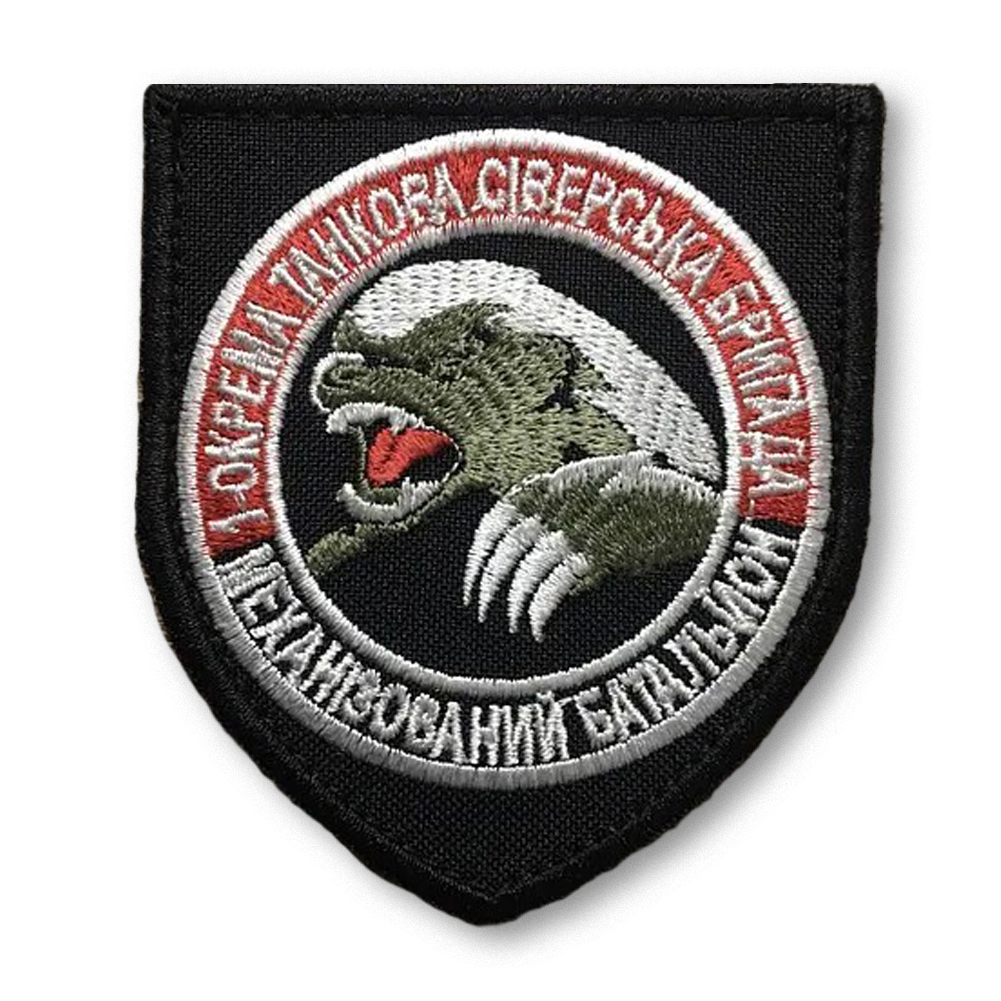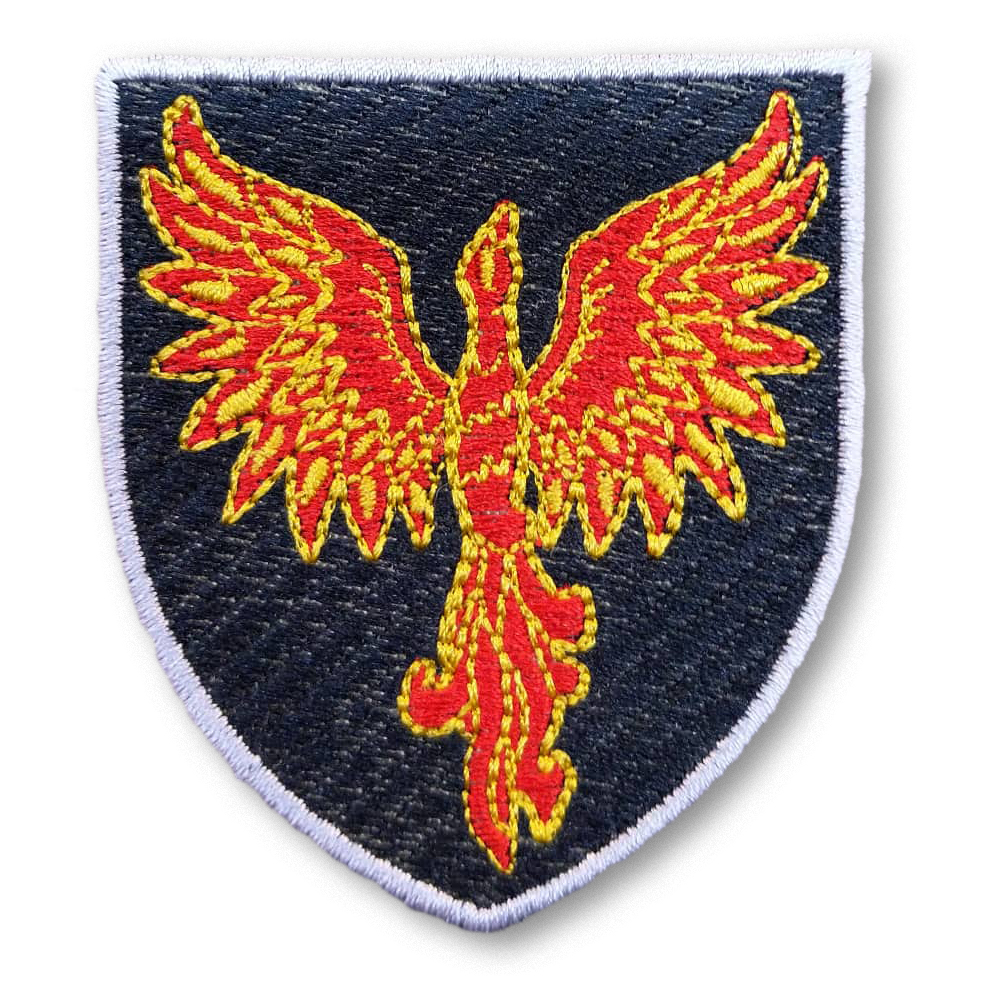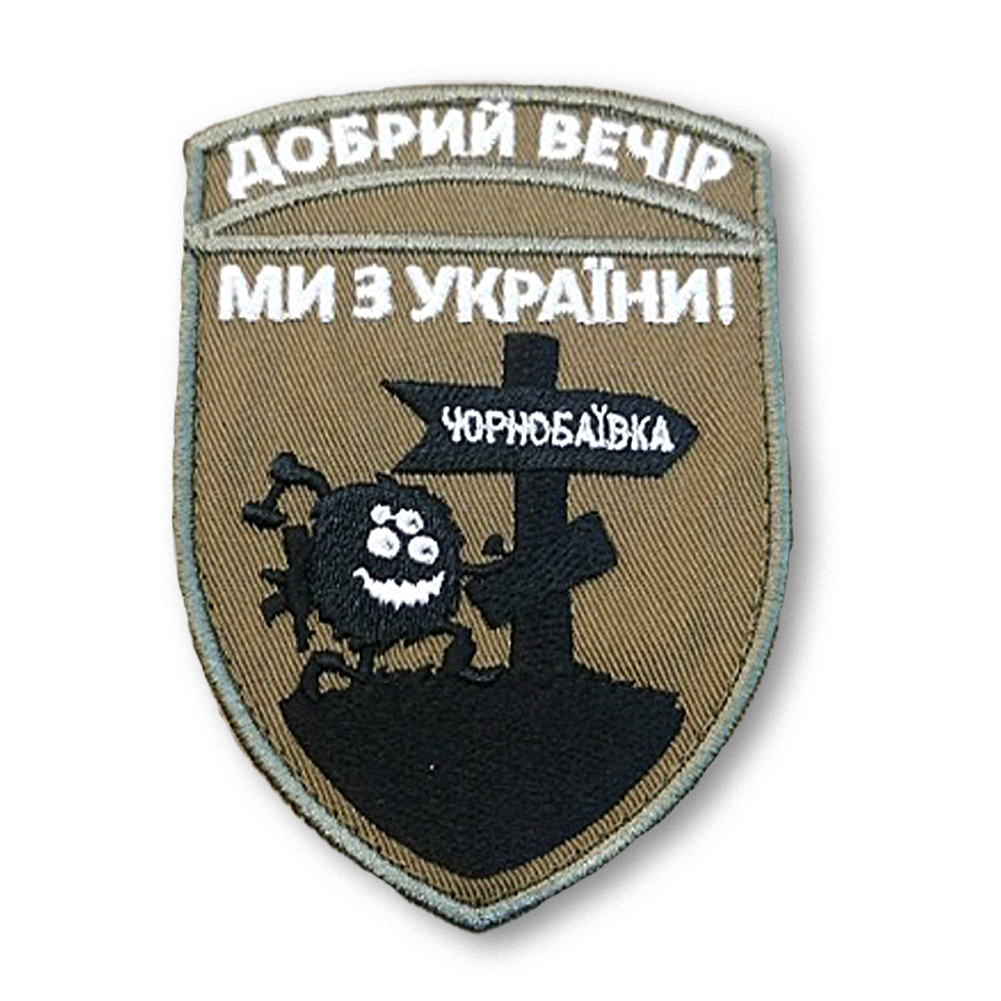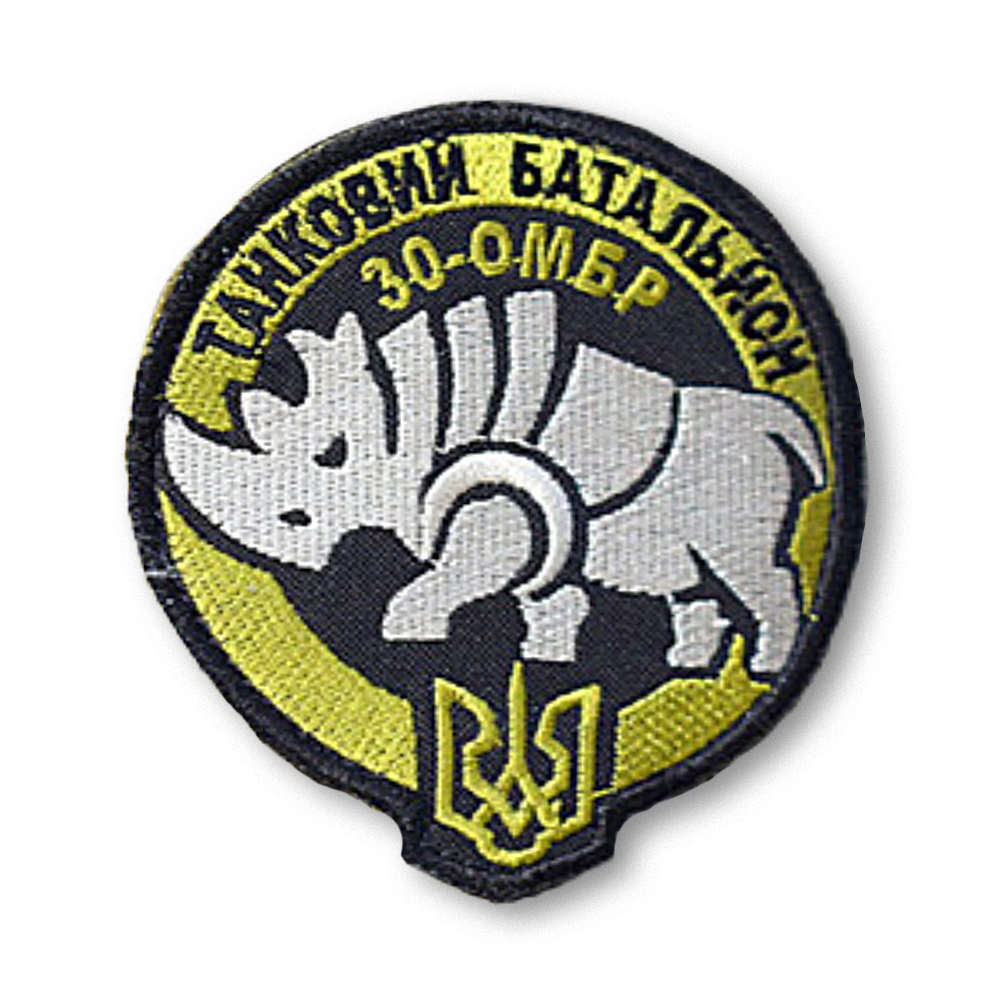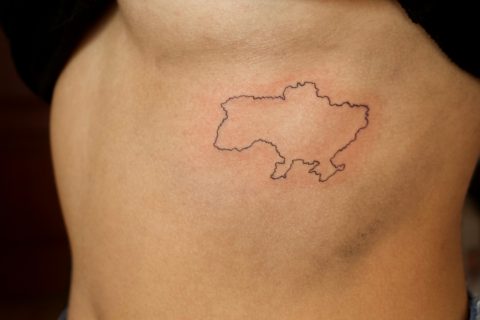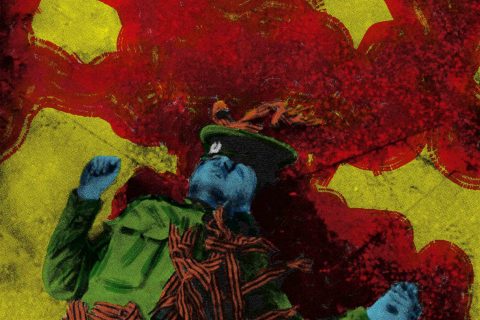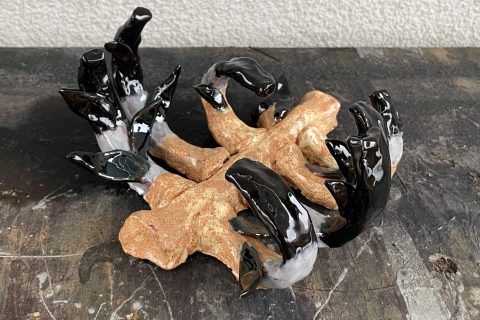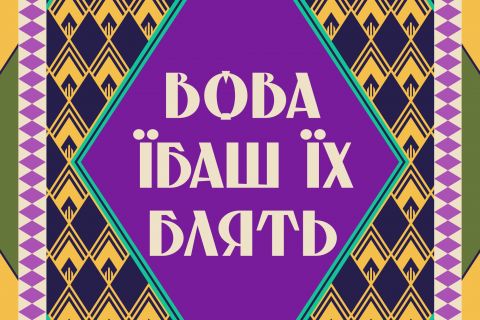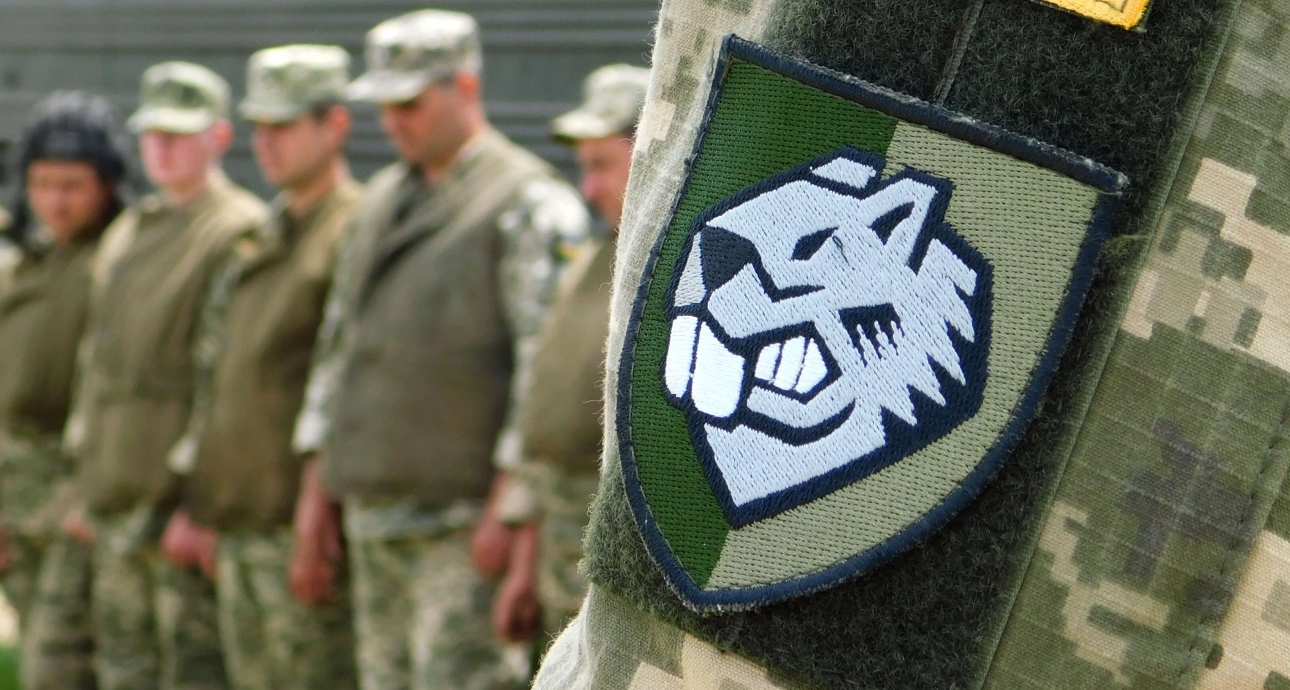
Angry beavers, badgers, and unicorns: Ukrainian military insignia
In Ukraine, chevrons and shoulder sleeve insignia are often confused in the context of military patches. The Armed Forces of Ukraine develop and approve themselves their shield-shaped shoulder sleeve insignia, which are considered the primary and official ones. Meanwhile, the chevron has a supplemental role — it is a patch with two V-shaped stripes used to signal the information about some categories of the military. In the Ukrainian army, for instance, only sergeants have chevrons — they wear these on shoulder marks. Based on the number of chevrons, it’s easier to distinguish between the military ranks of junior sergeant, sergeant, and senior sergeant. Still, the word “chevron” is used for any kind of military patch in Ukraine more often than not.
Military shoulder sleeve insignia first appeared in the 19th century. Before that, the military units were distinguished by their colourful uniforms — red, blue, yellow, etc. However, the weaponry evolved, and soon the soldier could be killed from a longer distance. Khaki became the colour of military uniforms to avoid that through better camouflage.
As a result, patches became a primary way to tell allies from enemies at a distance. Therefore, the shoulder sleeve insignia uses a maximum of four colours and four signs or symbols to remain readable to the naked eye. These emblems show the affiliation with a specific force (e.g., element, military unit, or formation). Also, they indicate the unit’s purpose and activity specifics (e.g., land troops, air forces, or marines).
The terminological confusion of chevron and shoulder sleeve insignia dates back to the post-revolutionary 1917. To identify its military formations, the White Guard relied on chevrons in their classical sense — the V-shaped patches of various colours — as the sole distinguishing marks for its troops. Later, when the army started using shoulder sleeve insignia, people kept referring to those as chevron out of habit.
After Ukraine proclaimed independence, its army abandoned Soviet shoulder sleeve insignia and started creating its own. The new emblems had to be closer to that used in Europe, but there was no clear indication of what they should depict until 2018. The Ukrainian military has only recently established the Instructional Guidelines as to Select Issues in the Development and Introduction of the Military Insignia of the Armed Forces of Ukraine to regulate the designing of insignia.
The guidelines prohibit incorporating icons or other religious symbols into military insignia. Also, combining weaponry and equipment from different historical periods in one composition is forbidden, e.g., a Javelin missile launcher and a sabre. Furthermore, no portrait of a distinguished figure would be approved. Their name cannot be used either — even if the unit is named after that person. Putting inscriptions on the shoulder sleeve insignia is generally not recommended — using a separate patch for that is better. The emblems are developed in two variants: one in the khaki palette for wearing in the field and the other in full colour for other occasions.
However, in addition to shoulder sleeve insignia, there are also so-called moral patches, which are habitually called “unofficial chevrons”. The moral patches primarily reflect their wearers’ sense of humour. The military can wear those only in the field but not in their place of permanent deployment, e.g., military bases.
Now, let’s take a closer look at the official shoulder sleeve insignia and informal patches.
Saboteur divers
These are the emblems of the 801st Underwater Anti-Sabotage and Anti-Mine Centre. First is the Centre’s official shoulder sleeve insignia, and second is the old patch of the 801st Independent Detachment, which was based in Sevastopol until 2014.
The Centre’s members currently wear both: one as the official shoulder sleeve insignia and the other as a tribute. They say the emblem bears no special symbolism, except the shark stands for the bad guys they are fighting.
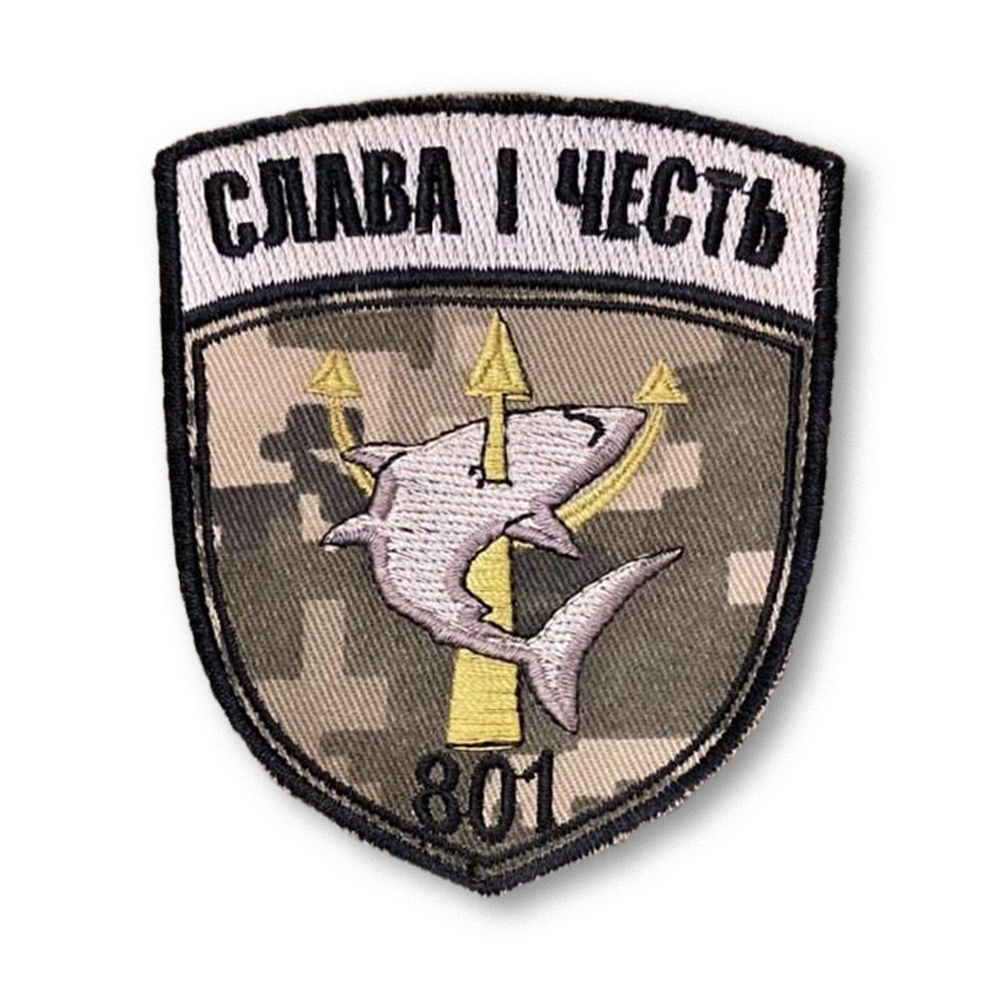
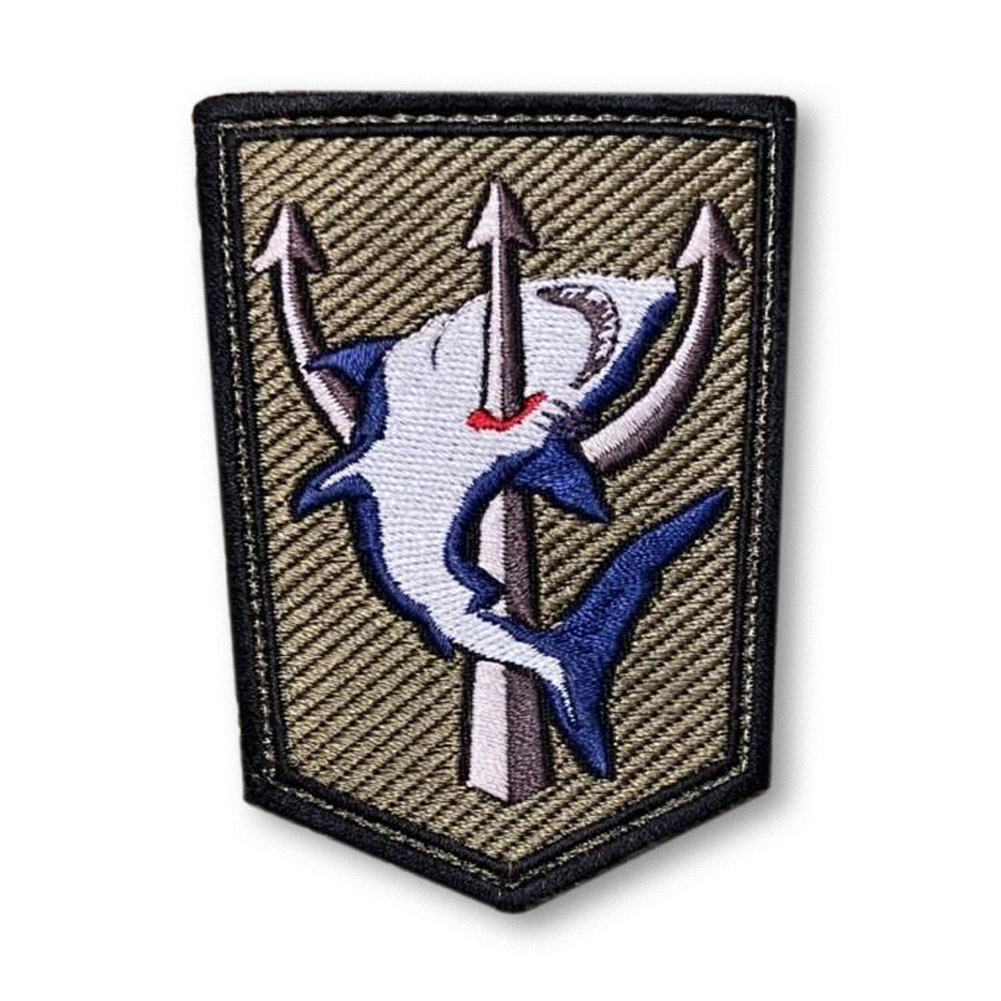
Neptune Dragon
The official shoulder sleeve insignia of the 32nd Missile Artillery Regiment features a dragon.
Trials of the Neptune missile system were carried out at the Regiment’s base, so the dragon’s fire breath may be seen as a metaphor for missiles.

Sunshine
Official shoulder sleeve insignia of the Sunshine Zakarpattia Volunteer Special Detachment.
The detachment’s commander, codename Friend Grey, and deputy commander, codename Stork, explain its meaning: “The patch was created at the beginning of the Russo-Ukrainian war in 2014. At that time, the detachment was based on the territory of the Sunshine children’s camp, and the name stuck. The cartoony sun was added on the patch to show that even the tough spec ops guys could bring the beams of good and light.”
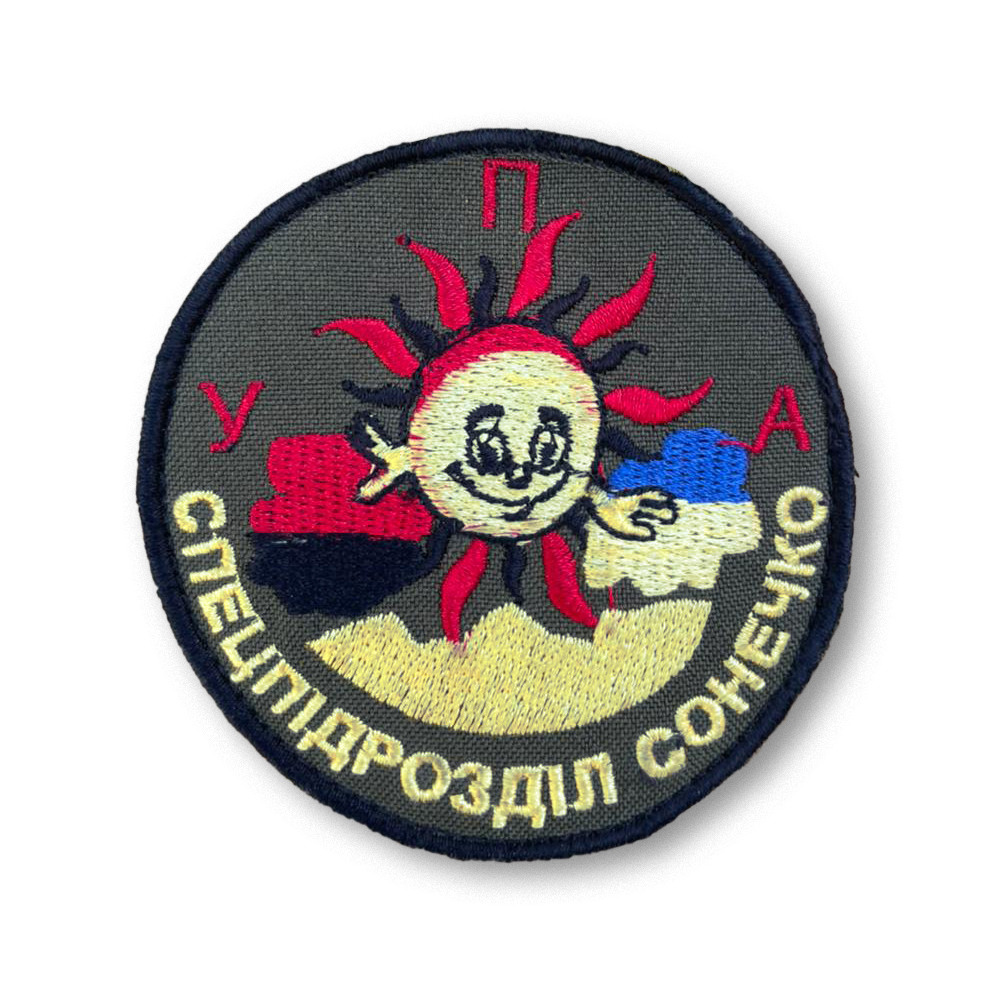
Fighter tiger
Official shoulder sleeve insignia of the 9th Fighter Regiment. Developed around 1997–1998 by Ukrainian heraldist Valerii Liakhov.
In the 1990s, Liakhov designed an entire series of emblems for the Ukrainian Air Force in this style. After his works won the creative competition, the Air Force command approved his insignia sketches as standard. However, they are no longer used now.
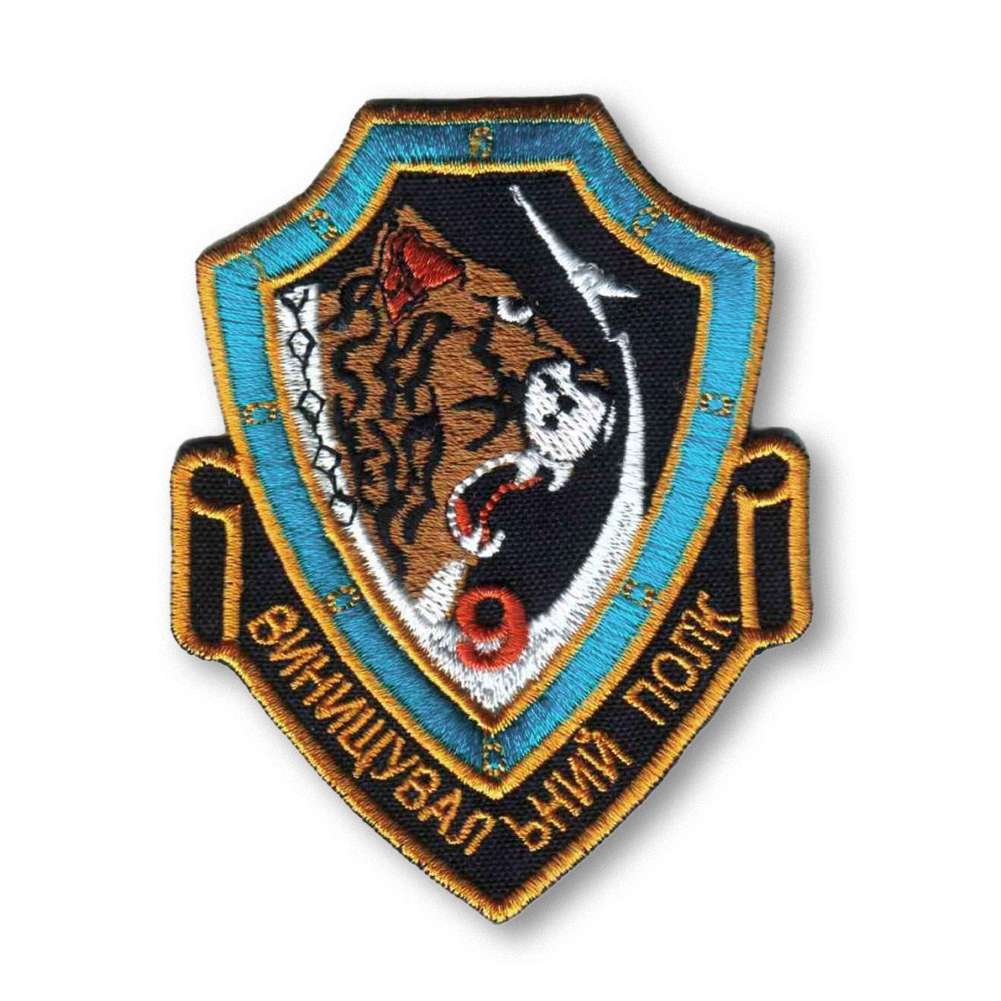
Seahorse
The Official shoulder sleeve insignia of the Kish Otaman Antin Holovatyi 73rd Marine Special Operations Centre came to be in 2019.
The patch depicts a seahorse with the
The sword of Sviatoslav the Brave was found in the Dnieper River near the Khortytsia island in 2011. The grand prince’s symbol is a common sight in the Ukrainian heraldry.

Medical patch
This is the unofficial shoulder sleeve insignia of the Knights of the First Winter Campaign 28th Independent Mechanized Brigade. It was developed around the end 1990s and is no longer used now.

Valiant beaver
The official shoulder sleeve insignia of the A3955 military unit was approved in February 2020.
Its sketch was created by Ukrainian artist and graphical designer Roman Shostia. The colour palette reflects the unit’s affiliation with the pontoon bridge forces working on land and water. In heraldry, the beaver symbolizes working capacity, engineering prowess, diligence, protection, and commitment. Besides, the image of the beaver is internationally considered a mark of cooperation, which the pontoon bridge units are often involved in. The beaver shows his teeth, signalling its readiness to fight the enemy.
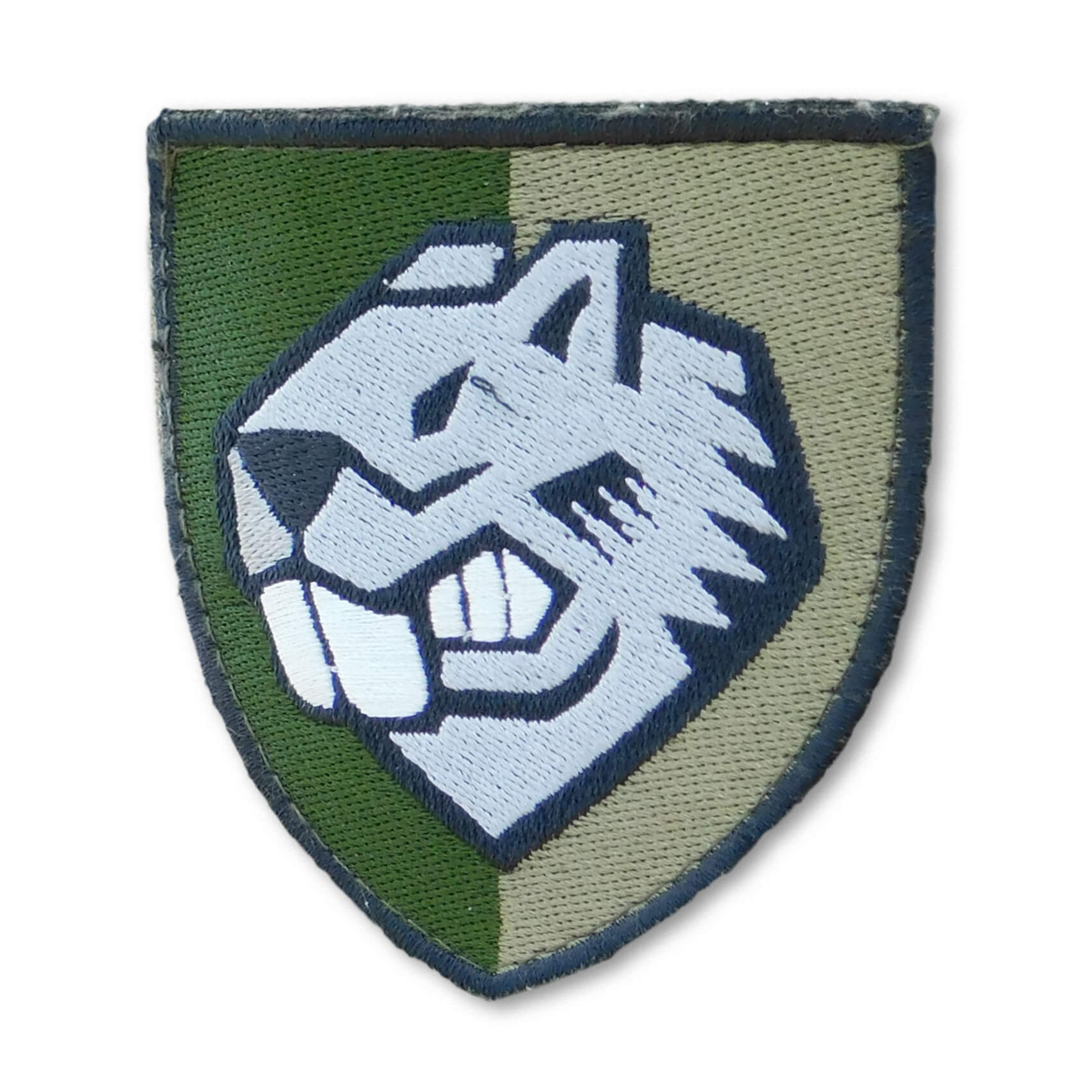
Wild duck
This one is the patch of the Wild Duck Joint Detachment of the Air Forces of Ukraine. The volunteer detachment was established in 2014 and took part in the battles for Donetsk Airport.
Here is what Colonel Bohdan Bondar had to say about the detachment’s shoulder sleeve insignia: “In 2014, when my detachment tried to take up the
strategically important position that opens the road to Avdiivka, Opytne, and Pisky. It sustained heavy damage from armed separatists and the Russian military.

Mountain
Insignia of the 109th Mountain Assault Battalion of the Halychyna-based 10th Mountain Assault Brigade.
The insignia of the battalions subordinate to the 10th Brigade was officially approved in 2018. All of them have common features — a Carpathian animal or bird, edelweiss (a symbol of perseverance and courage), crossed Hutsul battle hatchets (a symbol of protection, resolve, and stern disposition), and mountains (Hoverla, Berbeneskul, and Pip Ivan of the Chorna Hora mountain range). In this case, the jackdaw shows the battalion’s Halychyna roots.
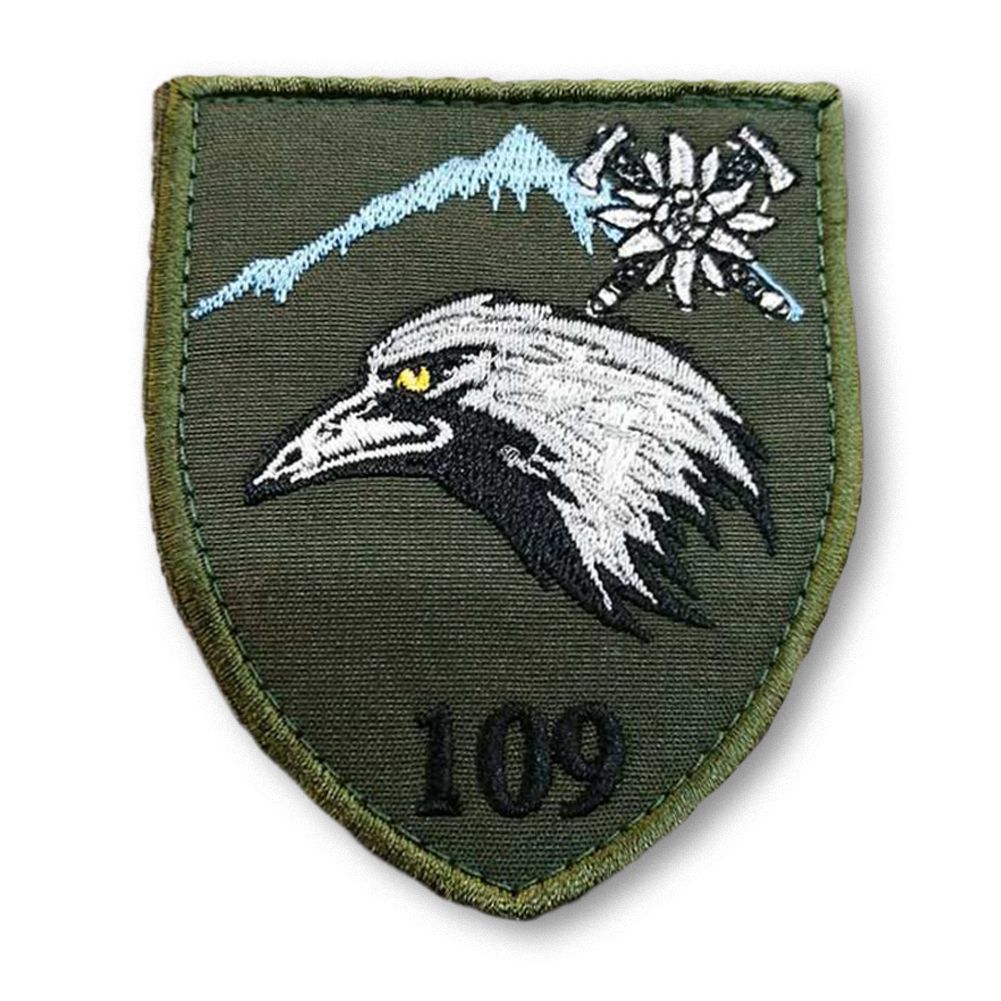
Galician jackdaw
The official shoulder sleeve insignia of the 102nd Independent Brigade of the Ivano-Frankivsk Territorial Defence Forces of the Armed Forces of Ukraine was approved in 2021.
The jackdaw is a reminder of the Brigade’s Galician roots. Variations of this bird were seen on Galician coats of arms as early as the 11th century.

LGBT unicorn
Unofficial patch of the Ukrainian LGBT military.
In the winter of 2021, illustrator Nastia Levytska was approached to design a logo for an LGBT military society. “The brief was confusing, and they provided a bunch of anime pics picked by the community members and existing military chevrons as a reference,” Nastia recounts. “Eventually, we stopped on the unicorn as a widely recognizable image. I decided to draw it not cute but valiant — breathing fire and wearing armour. It was hard to find the balance — I wanted it to evoke LGBT vibes while not looking lame. Also, it had to have that tough, military look. We even cleaned up the fire to avoid any hints of sexual imagery so as not to provoke the haters”.
In heraldry, a unicorn is akin to a brave soldier who would rather die than surrender to the enemy.
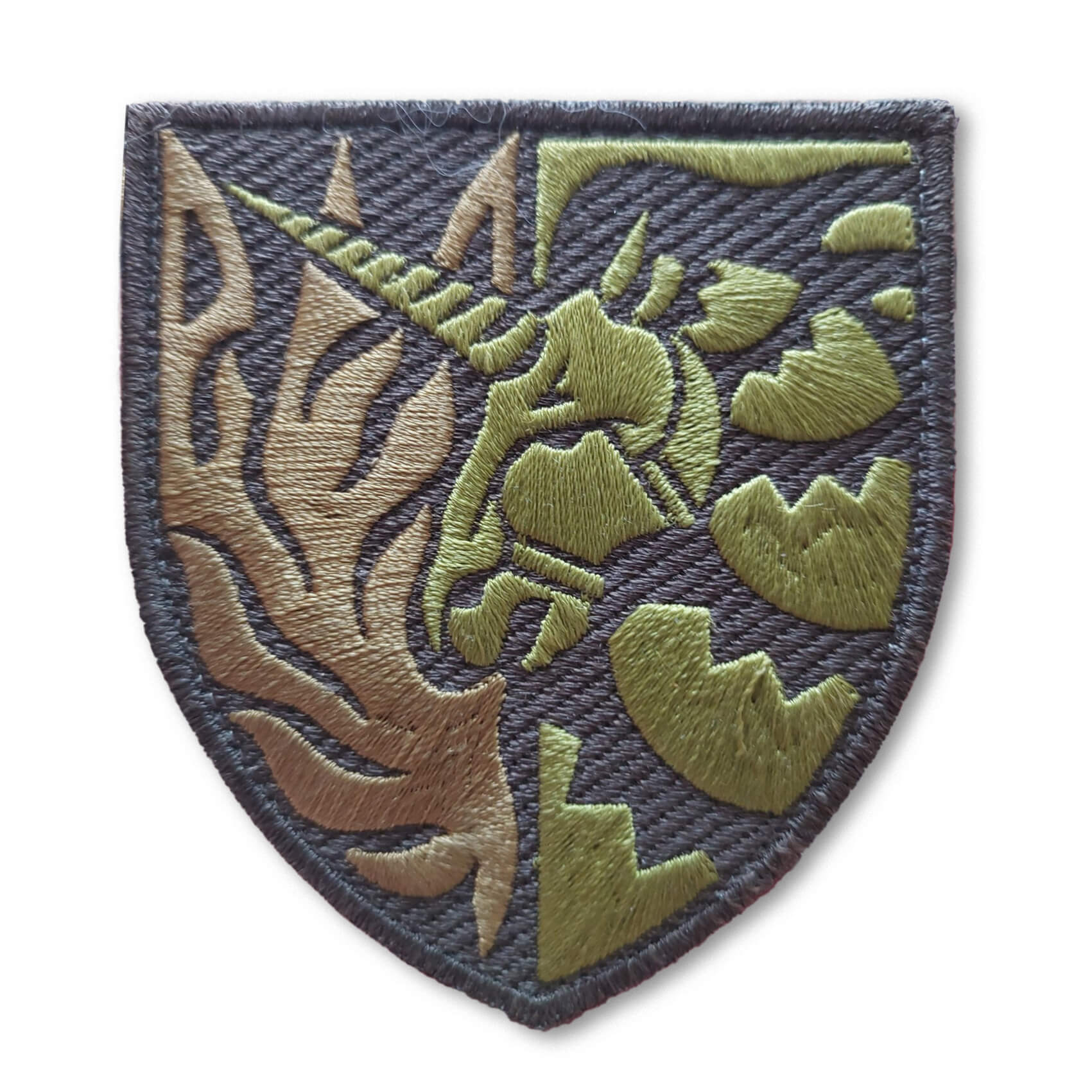
Ukrainian battle witches
When the war broke out, IT professional and bike racer Rina Starcheus sent her two children and the rest of her family to Western Ukraine and joined the Territorial Defence Forces. However, in addition to her military uniform, she decided to wear plastic elven ears and a neckerchief with a flower ornament. Other volunteers soon embraced her style, too. This is how an unofficial detachment of Ukrainian battle witches and later its shoulder sleeve insignia designed by Andrii Yermolenko came to be.
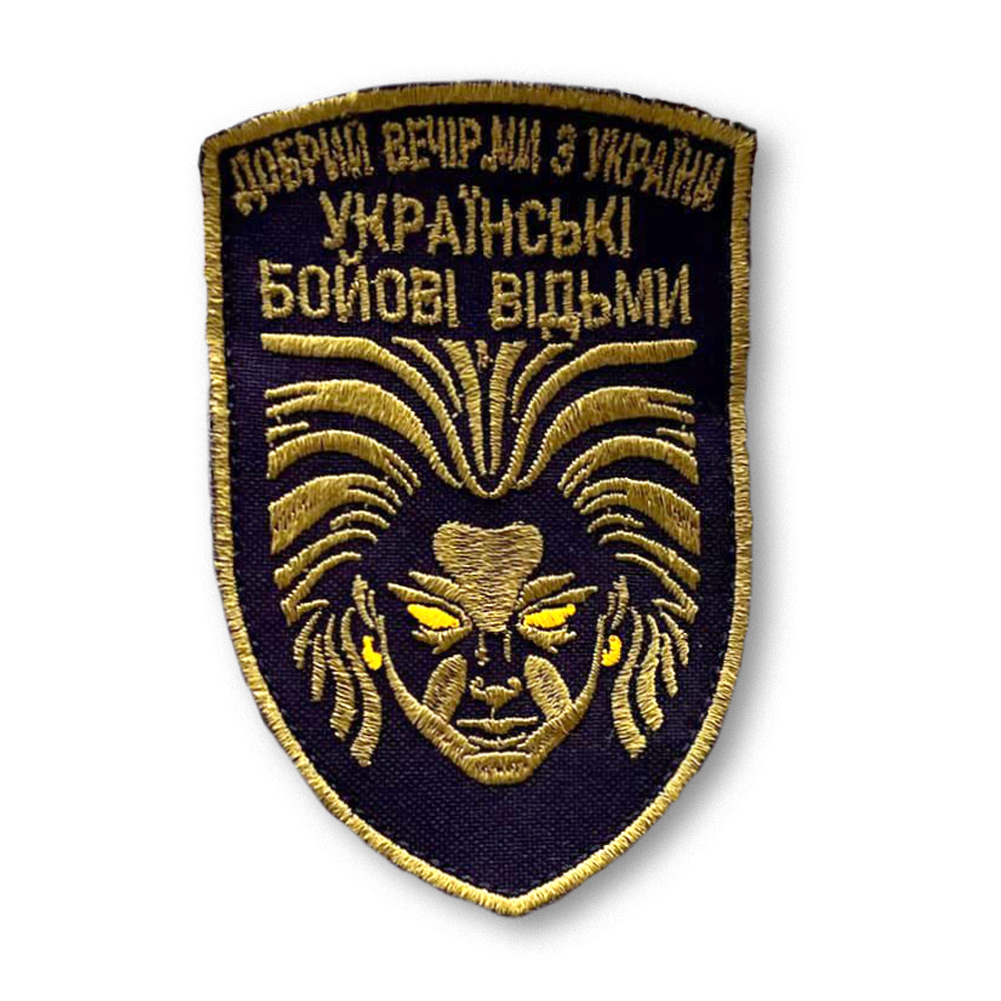
Fear the storm cloud and the Bucha crowd
In mid-April, designer Vlad Borsch evacuated from Bucha and decided to create a patch for his “neighbourhood cronies”. At the time, 150 unofficial patches were made, 80% of which are now worn by the military. The phrase “Fear the storm cloud and the Bucha crowd” is something of local folklore, and the patch colours are actually those seen on the city’s flag.
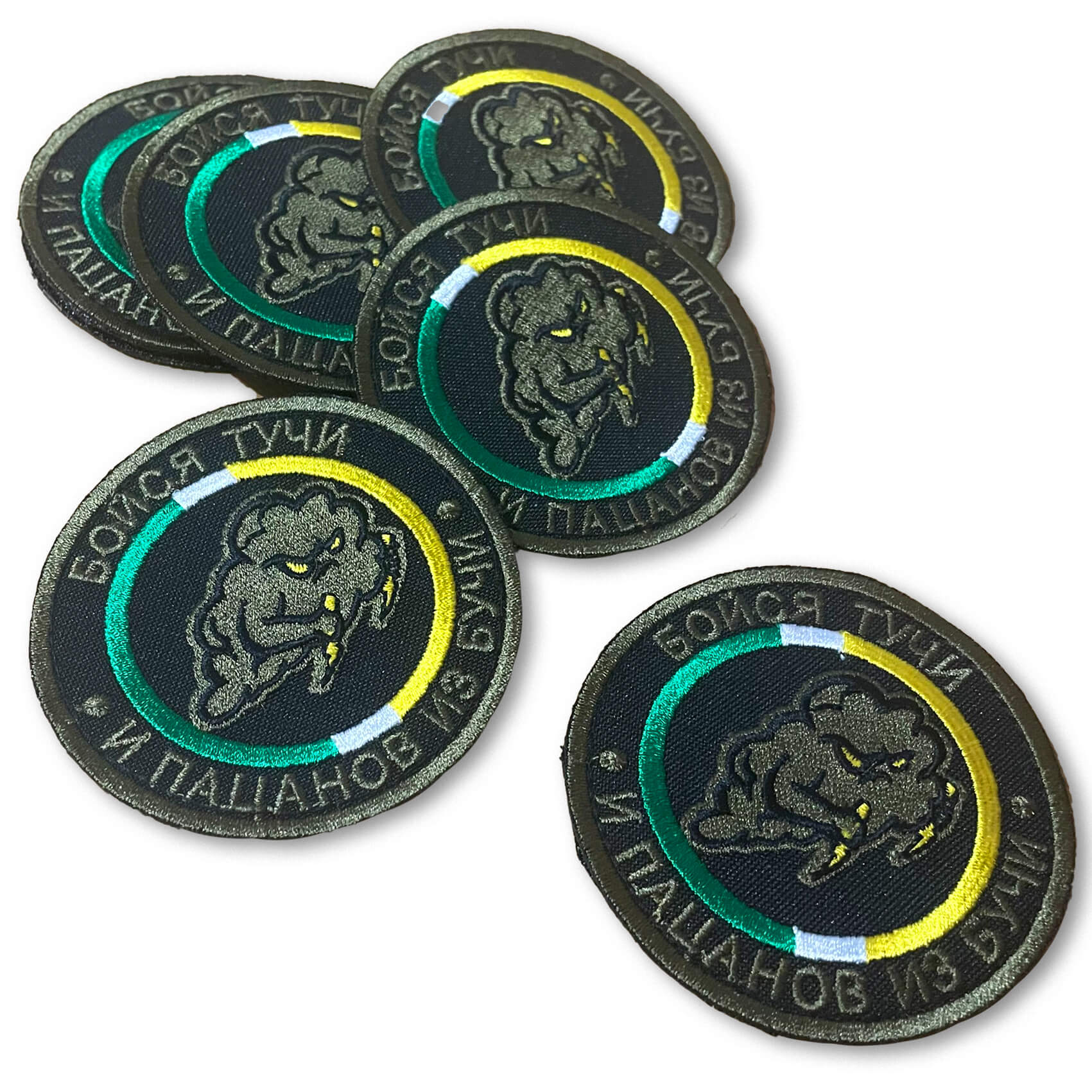
П’ятисоті
The Ukrainian military refer to chronic alcoholics as “avatars” or “smurfs” [a play on the blue skin colour of Na’vi or smurfs and a slang name for heavy drinkers in post-Soviet countries — “sinyak” (a blue/bruised person) in reference to the fact that the most marginalized alcoholics unable to buy liquor are known to resort to drinking denatured alcohol, which has a blue dye in it for ease of visual identification — Translator’s note]. Also, they are called “Cargo 500” or “Cargo 250” (as in a half-litre or quarter-litre bottle of vodka) [a play on “Cargo 200”, an informal term for soldiers killed in action used in the post-Soviet countries — Translator’s note].
This unofficial patch is given as more of a punishment for the wearer and a warning for other soldiers. It was designed by the volunteers back when the Donbas war began.

Cover photo: A3955 military unit
New and best
